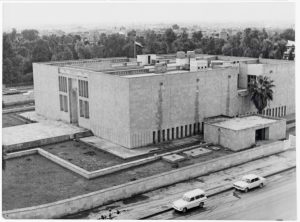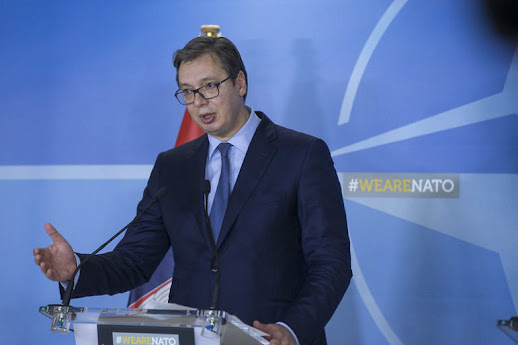Faculty draws attention to destruction of architectural monuments in Middle East
Amidst the tragedies of hundreds of thousands of deaths in the Middle East comes another sad reality: that of many historical monuments and architectural landmarks being destroyed.
Last fall, a team of faculty and students, led by art history lecturer Eva Bares and history professor Samer Traboulsi, helped to curate a week of exhibitions and lectures showcasing how the history of the Islamic world is currently under attack.
 |
| Eva Bares is a professor of art history at UNC Asheville. Photo courtesy of UNC Asheville. |
Traboulsi speaks out avidly about ISIS, Al Qaeda and other groups terrorizing different sites in Syria, Iraq and Mali, where death is constant and destruction is inevitable.
“It is a vicious group with a vicious ideology that basically aims at controlling at least the Muslim world in any means possible. This is their ultimate goal,” Traboulsi said. “However, it is important to point out that, first of all, the major target and the victims of ISIS are Muslims themselves. The media focuses on attacks in Western countries, but most of the attacks are on Muslims.”
 |
| Samer Traboulsi is a professor of history at UNC Asheville. Photo courtesy of UNC Asheville. |
The focus of the photography exhibition being buildings, however, was because showing the effects of war on human beings is too painful for the human mind to comprehend.
“Different people have different things that they respond to and so I do think that it’s easier for us to look at objects than at people and so I’m glad we’re doing an object-based project rather than people,” Bares said. “It’s the image of the boy in Aleppo that was dug up from the rubble and it went around the world, causing an outcry that shows for the most part we’ve been so cold or so immune to any of these cries for help.”
The Temple of Bel in Syria was one of the 16 monuments featured in the exhibition, which depicted minarets, mosques and other cultural sites that have either been obliterated or severely damaged.
For Bares, reaching out to students is an important way to raise awareness of how important it is to preserve the past.
“An individual lifetime sometimes is so short that you feel like you can’t really do anything but when you get involved with art, you realize that there’s thousands of years behind this and this would probably have hundreds of years to go and if we don’t do something, that part is gone,” Bares said. “Those hundreds of years still to come are gone.”
 |
| Artefacts in the Mosul Museum in Iraq were part of those destroyed by ISIS in February 2015. Photo courtesy of Biblioteca de Arte. |
Savannah Adams-Clark, a senior art history student, was part of the class that helped organize the exhibition.
“I chose one at random because I have done research on some of these pieces and it kind of blew my mind and I found out that some of the pieces were no longer standing and it really hit me in that moment,” Adams-Clark said.
The sect of ISIS perpetrating the attacks are known as Salafis and believe only what the prophet Muhammad did was true Islam, Traboulsi emphasized in his lecture “A Cultural Genocide: ISIS and the Destruction of Cultural Heritage in the Middle East.”
They primarily destroy monuments they believe are in the image of someone and worshipping someone other than Muhammad. Traboulsi is quick to challenge this mindset.
“They are literalists who are against everything that is new. They destroy shrines because they are doing what the ‘prophet told them,’” Traboulsi said. “What these guys are doing is a very blind, destructive movement. Some Sufi shrines that they have destroyed are active sites of worship and this ideology is clearly saying that these sites should not be venerated.”
There is a hypocrisy, Traboulsi said, of the destruction of these sites, specifically pillaging, indicating that ISIS’ actions are not so much religiously rooted as they are economically and politically rooted.
“That’s what they want by destroying Palmyra, which is the temple of the god Bel,” Traboulsi said. “All of these have disappeared and there’s no root, plus another thing is the hypocrisy of them actually selling all of the looted artifacts, which was a major funding for the movement. So, there’s a hypocrisy here. You claim that you’re destroying the images that at the same time you’re selling.”
Bares is very enthusiastic about ensuring more awareness can be created amongst student populations and talked excitedly about virtual exhibitions where visitors can see interactive videos of what the monuments once looked like.
“I think we’re working on creating more and more experiences like this for Islamic art,” Bares said. “There’s actually a person that has gone around to many mosques, buildings, palaces, anything that is at all associated with Islamic art and architecture around the world and has taken 360 degree videos, the same way that real-estate people take videos, except this is technology where you can actually zoom in, so you have really high-resolution detail that you can focus on and you can really sort of navigate yourself and move through the space almost as if you were there.”
For Bares, this is the starting point of a tremendous project that may revolutionize the way we understand history.
“We cannot understand the past if we assume the present to be the past state,” Bares said.
This article was originally published in The Blue Banner.


Comments